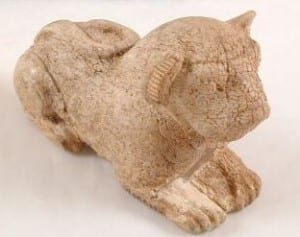Specimen of the Week 280: Preserved Gharial
By Tannis Davidson, on 24 February 2017
Over the past year, UCL Culture’s conservation team has been undertaking work on a project to conserve many of the Grant Museum’s specimens which are preserved in fluid (read more about ‘Project Pickle’ here). During the ongoing work, specimens have been re-hydrated, remounted, rehoused and re-identified.
Along the way there have also been some new discoveries of specimens that we didn’t know were in the collection. Some of the jars were full of fluid so discoloured that it was impossible to see the animal inside and it was only when the specimen was taken out that the identification could be made. One jar had an astounding 11 different animals inside including this week’s Specimen of the Week…
 Close
Close




